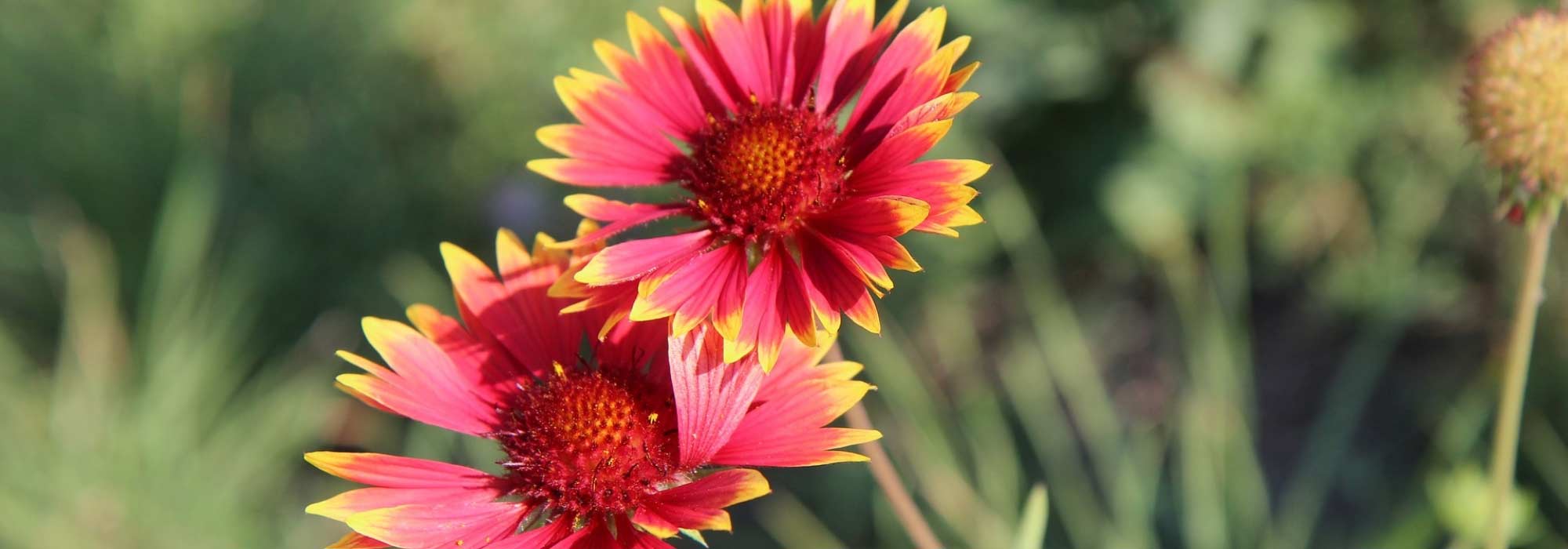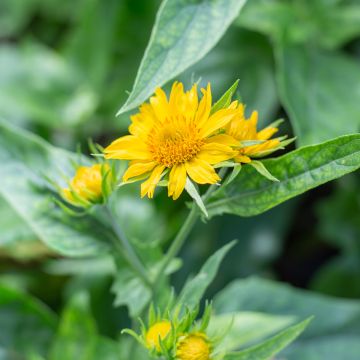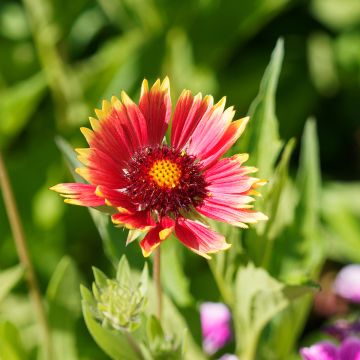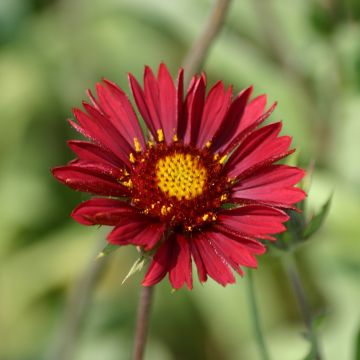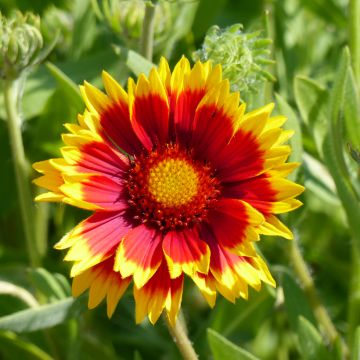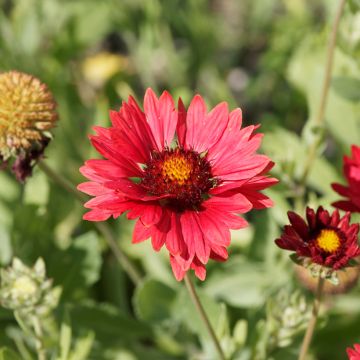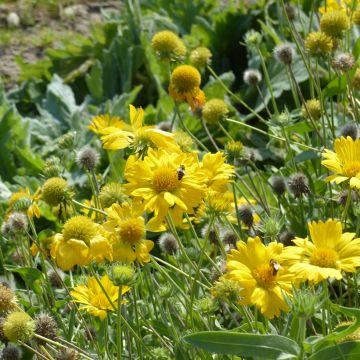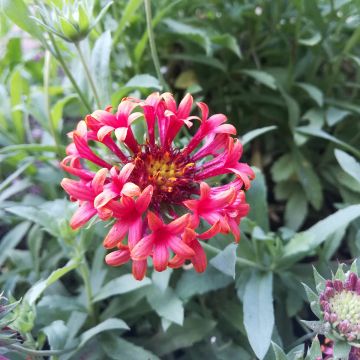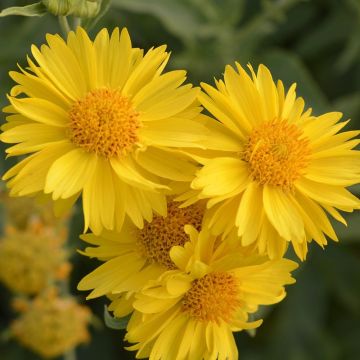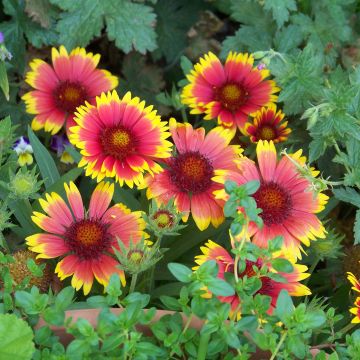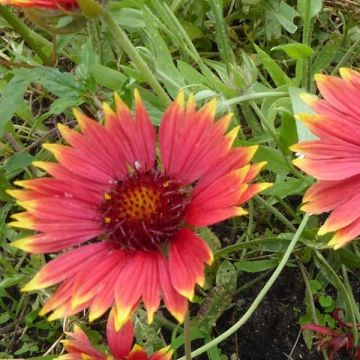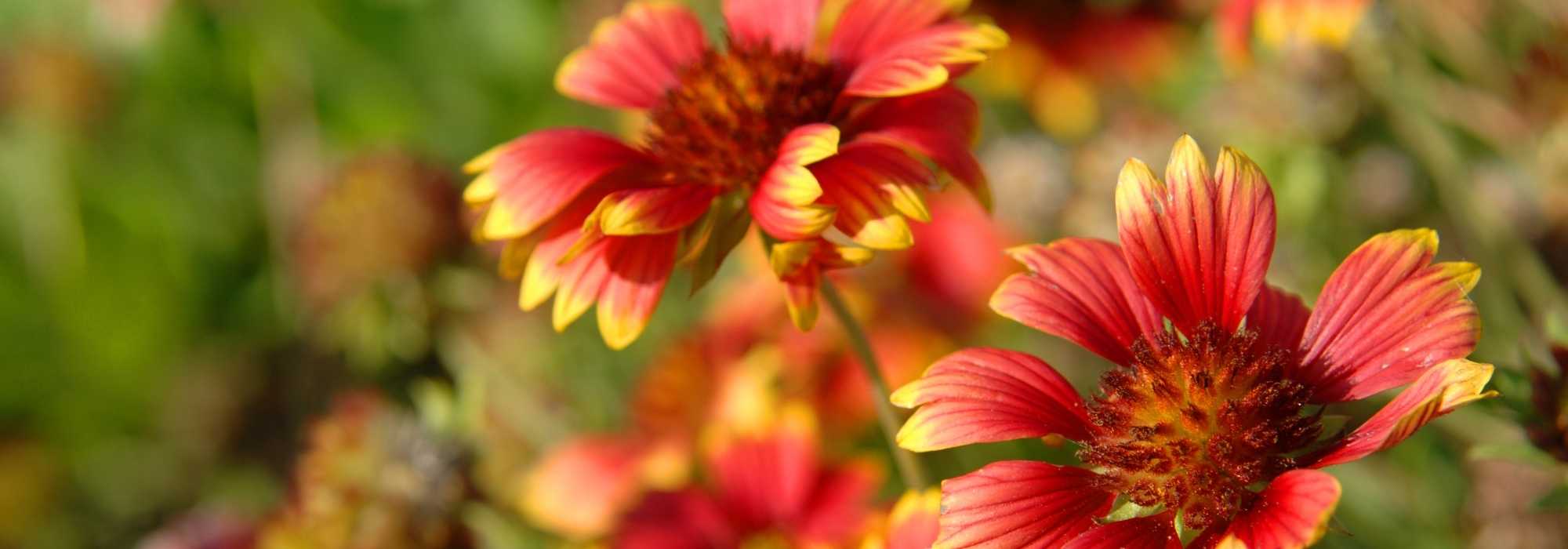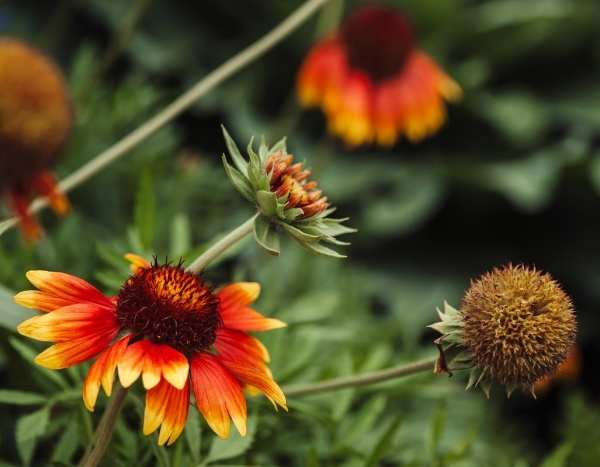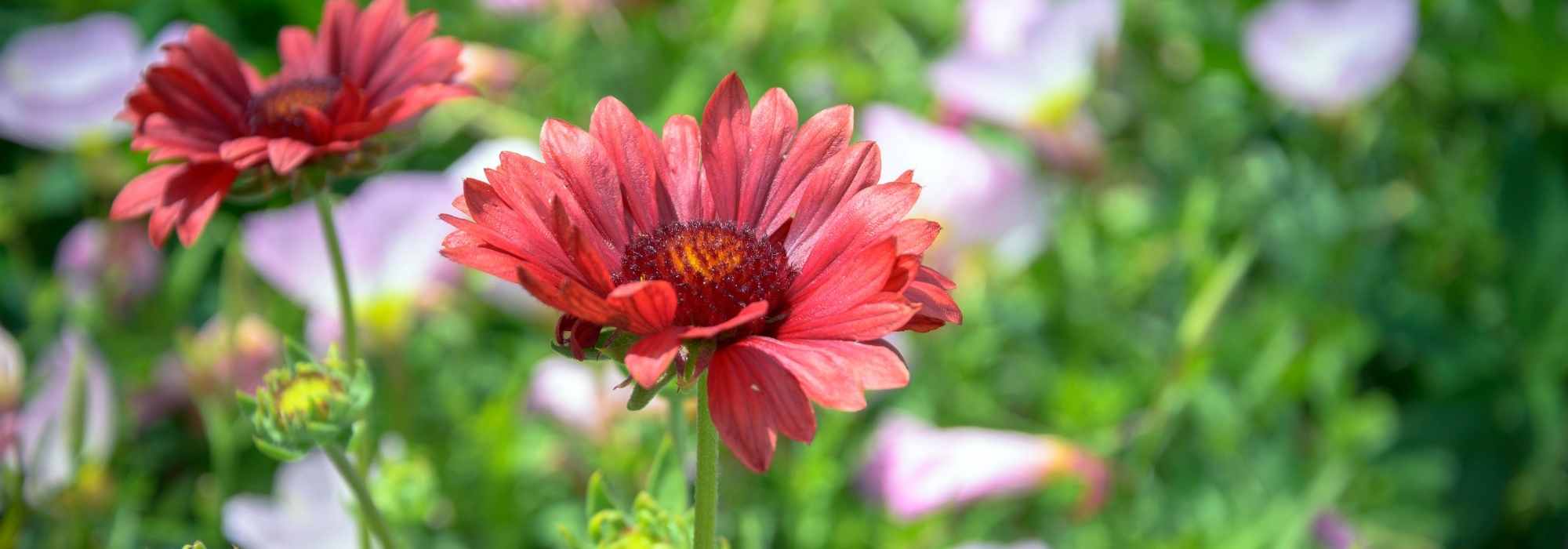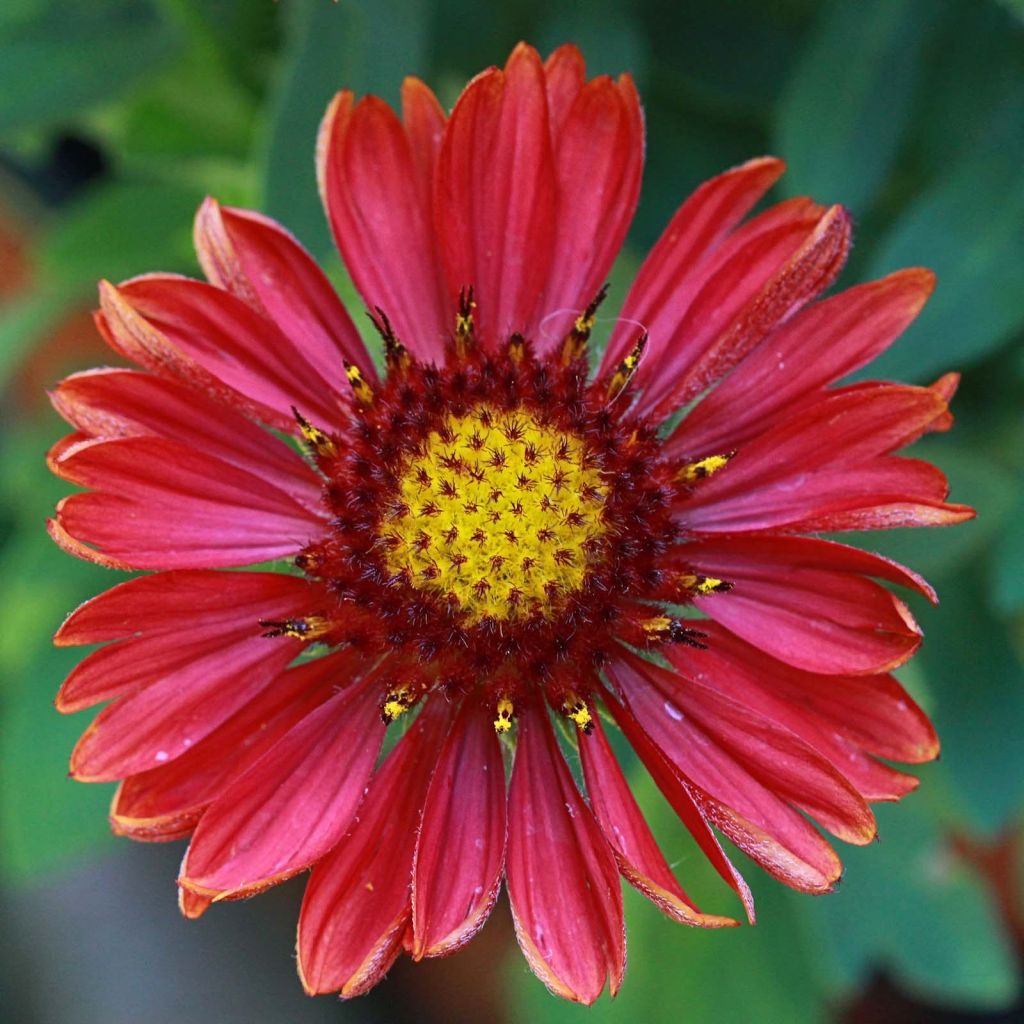

Gaillardia Arizona Red Shades
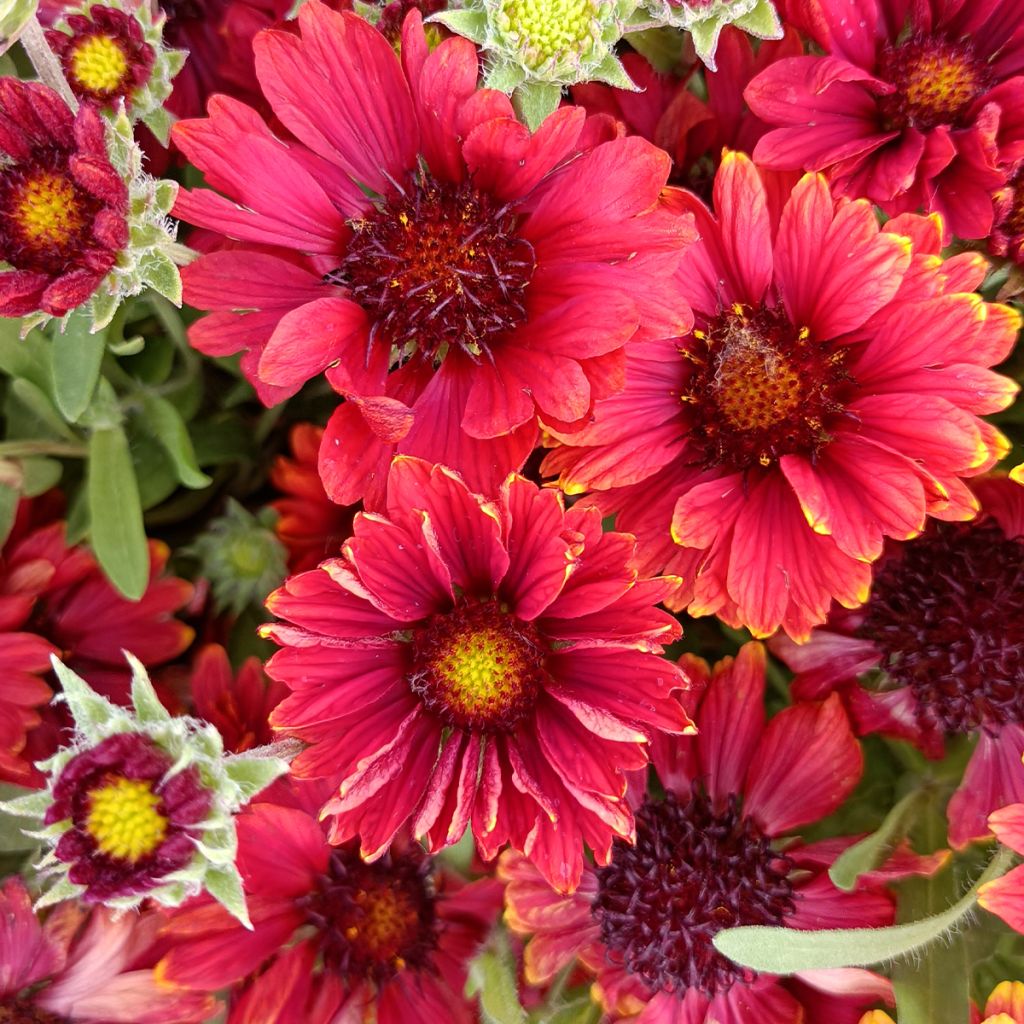

Gaillardia Arizona Red Shades
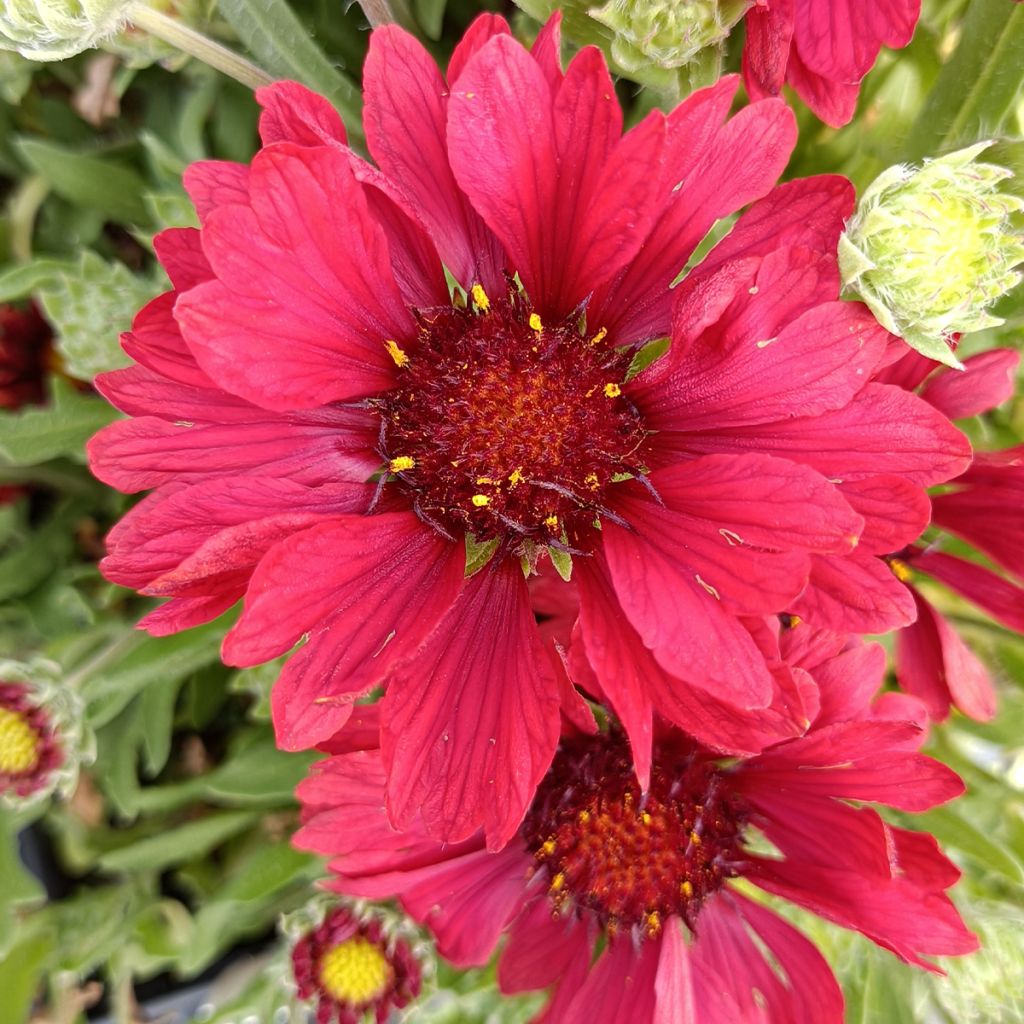

Gaillardia Arizona Red Shades
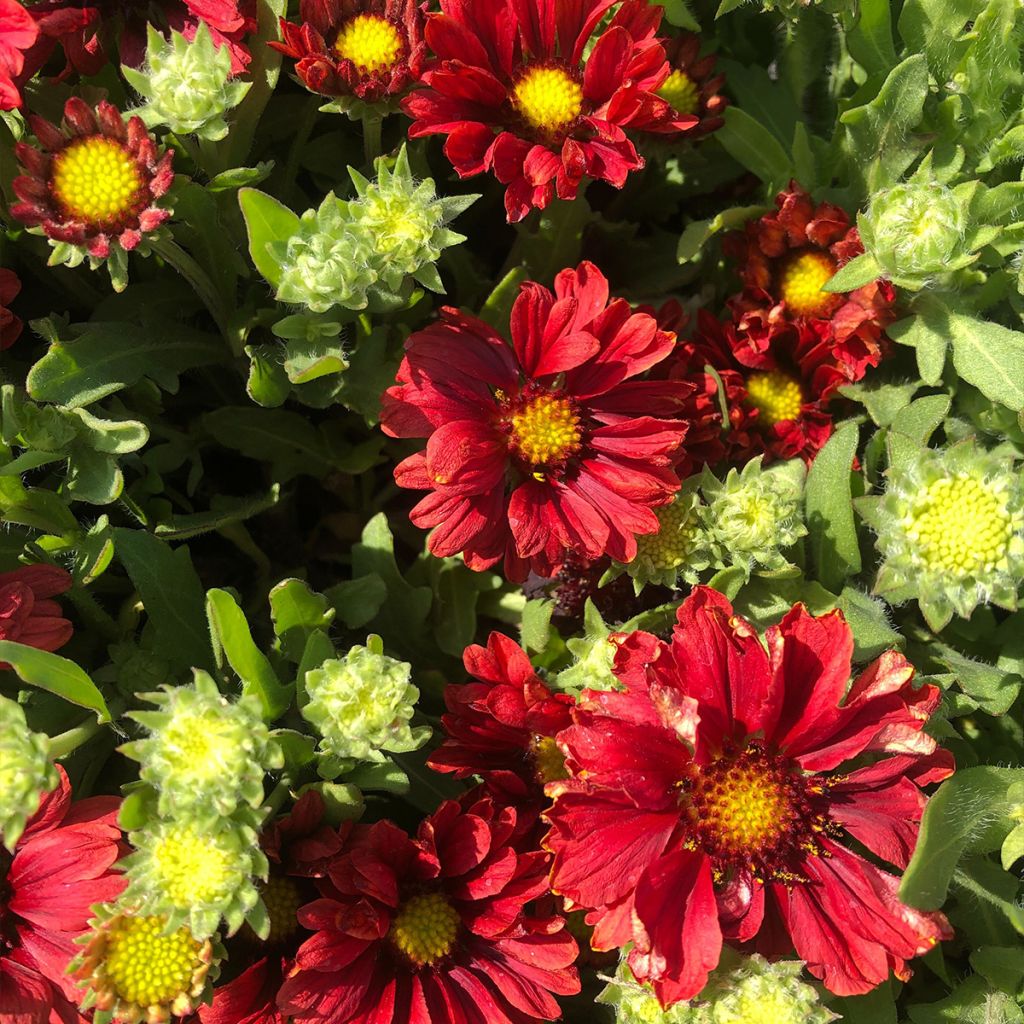

Gaillardia Arizona Red Shades
Gaillardia Arizona Red Shades
Gaillardia x grandiflora Arizona Red Shades
Great Blanket Flower
They have suffered during the journey, but the root ball appears healthy, planted and mulched. Hopefully these young plants will recover, we will keep a smooth eye on them.
Jaime, 29/11/2022
Special offer!
Receive a €20 voucher for any order over €90 (excluding delivery costs, credit notes, and plastic-free options)!
1- Add your favorite plants to your cart.
2- Once you have reached €90, confirm your order (you can even choose the delivery date!).
3- As soon as your order is shipped, you will receive an email containing your voucher code, valid for 3 months (90 days).
Your voucher is unique and can only be used once, for any order with a minimum value of €20, excluding delivery costs.
Can be combined with other current offers, non-divisible and non-refundable.
Home or relay delivery (depending on size and destination)
Schedule delivery date,
and select date in basket
This plant carries a 12 months recovery warranty
More information
We guarantee the quality of our plants for a full growing cycle, and will replace at our expense any plant that fails to recover under normal climatic and planting conditions.
Does this plant fit my garden?
Set up your Plantfit profile →
Description
Gaillardia x grandiflora 'Arizona Red Shades' is distinguished by the precocity of its flowering, the beautiful ruby, purple and gold colours of its large flowers, and its compact habit, well suited for small spaces, rockeries, borders, and sunny terraces. Like all gaillardias, it is a perennial that is both hardy and robust, almost foolproof in the sun, in any well-drained garden soil. It blooms as long as summer lasts, and its maintenance consists of removing faded flowers as they appear.
Gaillardia (x) grandiflora is a horticultural hybrid resulting from the cross-breeding between Gaillardia aristata, a perennial species native to the great central plains of North America, and G. pulchella, an almost annual plant native to northern Mexico and the south and center of the United States. Belonging, like its two parents and like the sunflower, to the large family of Asteraceae, this hybrid has inherited from its first parent a beautiful hardiness and increased longevity, and from the second parent its extraordinary floribundity, rapid growth, and extreme undemanding nature. ' Arizona Red' quickly forms a clump of about 30-35 cm (12-14in) in all directions. Its flowering begins in May-June depending on the climate, about a month before that of other varieties. It produces large flowers in wide heads of 6-7 cm (2-3in), where pollinating insects gather. Their colour is a very bright red-purple, with the petals sometimes tipped with yellow. The heart of the flower is a convex disk, golden yellow when fully open, taking on a red-violet to brown hue from the periphery to the centre, at the same time as the seeds form. The foliage, mainly basal, is composed of narrow, slightly lobed or deeply cut, light green-grey and hairy leaves, rough to the touch. The vegetation dries more or less in winter and regrows in spring.
A bit outdated today, gaillardias, along with coreopsis and Gaura, are nevertheless among the champions of floral abundance and undemanding natures. Even the wild form G. aristata proves to be very floriferous. Their only drawback is their poor tolerance to ambient humidity, even in well-drained soil. In gardens in hotter, more southern regions, especially in mediocre soils, this plant is truly a boon: it will accompany lavender, perennial blood geraniums, nepetas, seaside cineraria, and grasses, which are equally frugal and floriferous plants. In cooler soil, associate it with perennial salvias (Mainacht, Schneehügel, etc.) and delphiniums, for example. Its flowers hold up very well in bouquets.
Gaillardia Arizona Red Shades in pictures
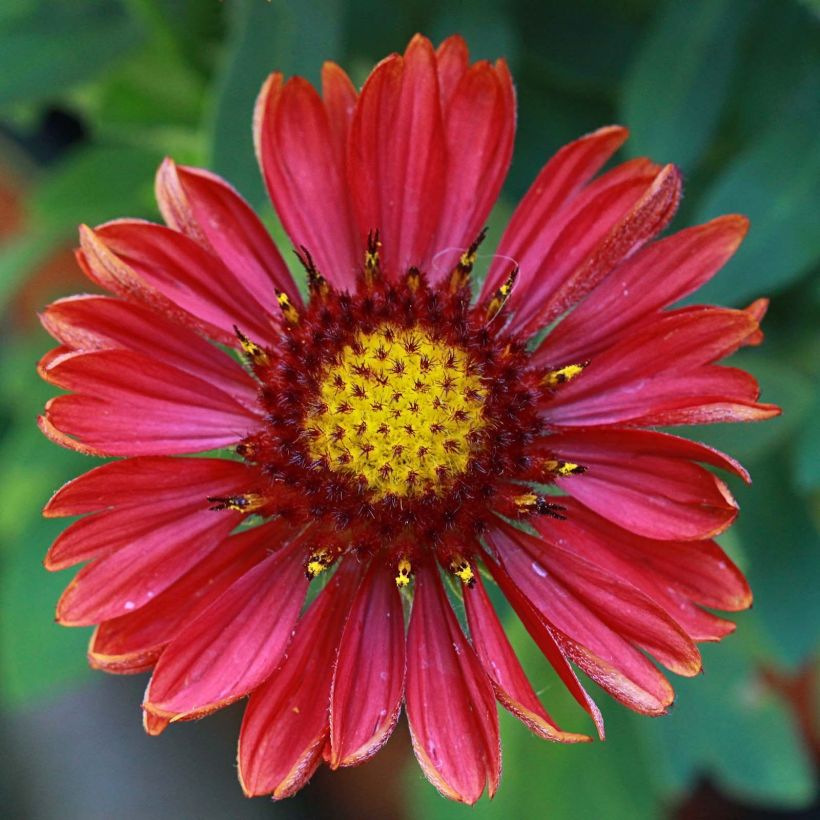

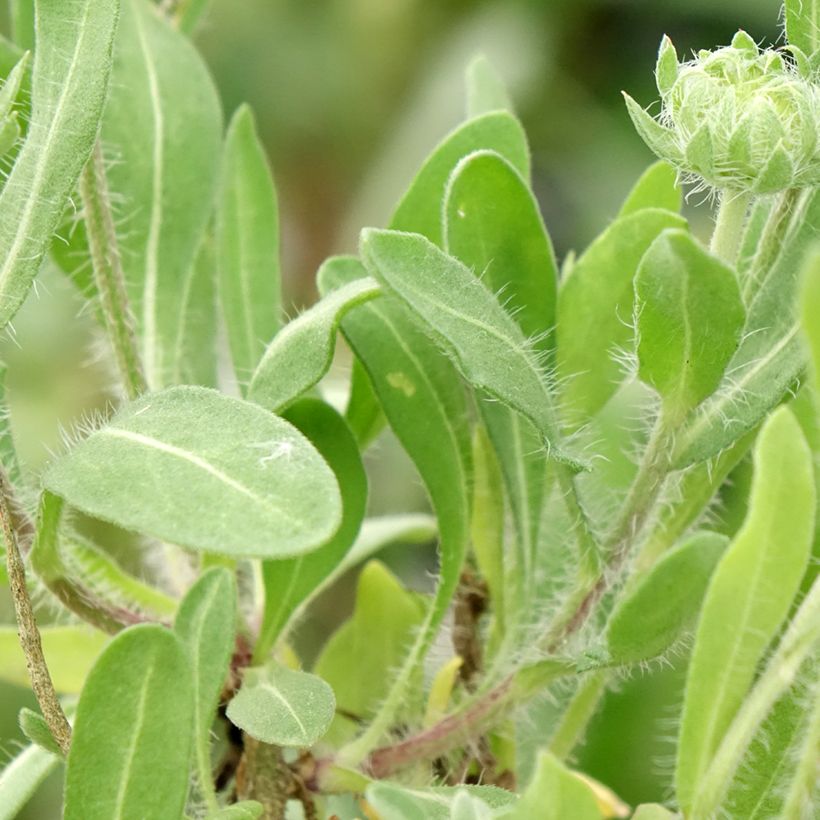

Flowering
Foliage
Plant habit
Botanical data
Gaillardia
x grandiflora
Arizona Red Shades
Asteraceae
Great Blanket Flower
Gaillardia x grandiflora 'Arizona Red Shades' (Arizona series)
Cultivar or hybrid
Other Gaillardia - Blanket Flower
View all →Planting and care
Resilient and undemanding, gaillardias tolerate intense heat, cold, drought, strong winds, and poor soils. In summer, even a little rain or a small amount of watering during extended dry periods will revive the flowering. Plant them in well-drained soil, in full sun, and stake the taller varieties if necessary. In cooler climates, the stumps gain in robustness what you sacrifice in flowers: pruning the stems to 10 cm (4in) above the ground in late September helps them survive the winter. Regularly removing faded flowers stimulates flower production.
Planting period
Intended location
Care
Planting & care advice
-
, onOrder confirmed
Reply from on Promesse de fleurs
Haven't found what you were looking for?
Hardiness is the lowest winter temperature a plant can endure without suffering serious damage or even dying. However, hardiness is affected by location (a sheltered area, such as a patio), protection (winter cover) and soil type (hardiness is improved by well-drained soil).

Photo Sharing Terms & Conditions
In order to encourage gardeners to interact and share their experiences, Promesse de fleurs offers various media enabling content to be uploaded onto its Site - in particular via the ‘Photo sharing’ module.
The User agrees to refrain from:
- Posting any content that is illegal, prejudicial, insulting, racist, inciteful to hatred, revisionist, contrary to public decency, that infringes on privacy or on the privacy rights of third parties, in particular the publicity rights of persons and goods, intellectual property rights, or the right to privacy.
- Submitting content on behalf of a third party;
- Impersonate the identity of a third party and/or publish any personal information about a third party;
In general, the User undertakes to refrain from any unethical behaviour.
All Content (in particular text, comments, files, images, photos, videos, creative works, etc.), which may be subject to property or intellectual property rights, image or other private rights, shall remain the property of the User, subject to the limited rights granted by the terms of the licence granted by Promesse de fleurs as stated below. Users are at liberty to publish or not to publish such Content on the Site, notably via the ‘Photo Sharing’ facility, and accept that this Content shall be made public and freely accessible, notably on the Internet.
Users further acknowledge, undertake to have ,and guarantee that they hold all necessary rights and permissions to publish such material on the Site, in particular with regard to the legislation in force pertaining to any privacy, property, intellectual property, image, or contractual rights, or rights of any other nature. By publishing such Content on the Site, Users acknowledge accepting full liability as publishers of the Content within the meaning of the law, and grant Promesse de fleurs, free of charge, an inclusive, worldwide licence for the said Content for the entire duration of its publication, including all reproduction, representation, up/downloading, displaying, performing, transmission, and storage rights.
Users also grant permission for their name to be linked to the Content and accept that this link may not always be made available.
By engaging in posting material, Users consent to their Content becoming automatically accessible on the Internet, in particular on other sites and/or blogs and/or web pages of the Promesse de fleurs site, including in particular social pages and the Promesse de fleurs catalogue.
Users may secure the removal of entrusted content free of charge by issuing a simple request via our contact form.
The flowering period indicated on our website applies to countries and regions located in USDA zone 8 (France, the United Kingdom, Ireland, the Netherlands, etc.)
It will vary according to where you live:
- In zones 9 to 10 (Italy, Spain, Greece, etc.), flowering will occur about 2 to 4 weeks earlier.
- In zones 6 to 7 (Germany, Poland, Slovenia, and lower mountainous regions), flowering will be delayed by 2 to 3 weeks.
- In zone 5 (Central Europe, Scandinavia), blooming will be delayed by 3 to 5 weeks.
In temperate climates, pruning of spring-flowering shrubs (forsythia, spireas, etc.) should be done just after flowering.
Pruning of summer-flowering shrubs (Indian Lilac, Perovskia, etc.) can be done in winter or spring.
In cold regions as well as with frost-sensitive plants, avoid pruning too early when severe frosts may still occur.
The planting period indicated on our website applies to countries and regions located in USDA zone 8 (France, United Kingdom, Ireland, Netherlands).
It will vary according to where you live:
- In Mediterranean zones (Marseille, Madrid, Milan, etc.), autumn and winter are the best planting periods.
- In continental zones (Strasbourg, Munich, Vienna, etc.), delay planting by 2 to 3 weeks in spring and bring it forward by 2 to 4 weeks in autumn.
- In mountainous regions (the Alps, Pyrenees, Carpathians, etc.), it is best to plant in late spring (May-June) or late summer (August-September).
The harvesting period indicated on our website applies to countries and regions in USDA zone 8 (France, England, Ireland, the Netherlands).
In colder areas (Scandinavia, Poland, Austria...) fruit and vegetable harvests are likely to be delayed by 3-4 weeks.
In warmer areas (Italy, Spain, Greece, etc.), harvesting will probably take place earlier, depending on weather conditions.
The sowing periods indicated on our website apply to countries and regions within USDA Zone 8 (France, UK, Ireland, Netherlands).
In colder areas (Scandinavia, Poland, Austria...), delay any outdoor sowing by 3-4 weeks, or sow under glass.
In warmer climes (Italy, Spain, Greece, etc.), bring outdoor sowing forward by a few weeks.






























